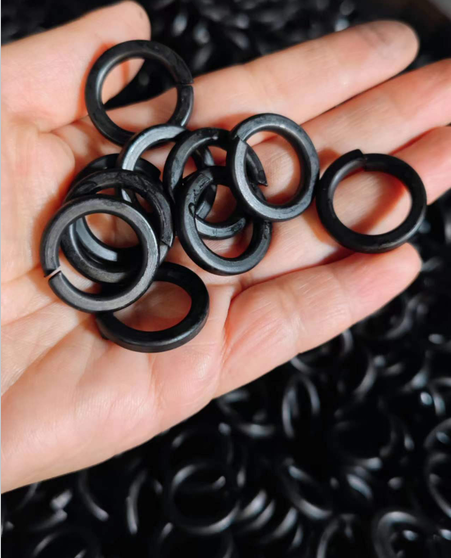High-Quality Custom Flat Washers for Various Applications
Understanding Custom DIN 125 Plain Washers A Comprehensive Guide
When it comes to mechanical engineering and assembly, every component plays a crucial role in ensuring stability, durability, and performance. Among these, the plain washer, specifically the DIN 125 flat washer, stands out due to its simplicity and functionality. This article delves into the characteristics and applications of custom DIN 125 plain washers, providing insights into why they are essential in various industries.
What is a DIN 125 Plain Washer?
A DIN 125 plain washer is a flat, circular piece of metal typically made from materials such as steel, stainless steel, or plastic. Its primary function is to distribute the load of a threaded fastener, such as a bolt or nut, over a larger surface area. By doing so, it helps prevent damage to the surfaces being joined, reduces the risk of loosening due to vibrations, and minimizes wear and tear on the components.
The 'DIN' in DIN 125 refers to the German Institute for Standardization (Deutsches Institut für Normung), which developed the standard for these washers. The specifications include dimensions, material properties, and load-bearing capabilities necessary for various applications.
Characteristics of Custom DIN 125 Washers
1. Material Variety Custom DIN 125 washers can be made from a range of materials, including mild steel, hardened steel, stainless steel, and even non-metallic materials like nylon. The choice of material often depends on the specific application, environmental factors, and required strength.
2. Custom Sizes and Thicknesses One of the main advantages of custom DIN 125 washers is the ability to tailor their size and thickness to meet the requirements of particular projects. Traditional washers may not fit all applications, so having the option for custom specifications ensures optimal fit and performance.
3. Corrosion Resistance For applications exposed to harsh environments, choosing a material with corrosion resistance is crucial. Stainless steel washers, for instance, offer great durability and resistance to rust, making them ideal for outdoor or moist situations.
4. Load Distribution The flat surface of the DIN 125 washer enables even load distribution. This characteristic helps in preventing shear stress and providing stability in various mechanical assemblies.
Applications of Custom DIN 125 Plain Washers
custom din125 plain washer flat washer

Custom DIN 125 washers find their applications across numerous industries, demonstrating their versatility and importance
1. Construction In construction, flat washers are used in conjunction with bolts and screws to hold structural components together. Their load-distributing properties are essential to maintain the integrity of structures, preventing failures in critical components.
2. Automotive The automotive industry relies heavily on DIN 125 washers for various assemblies. These washers help secure components in automobiles, ensuring that they withstand vibrations without loosening.
3. Manufacturing When assembling machines or equipment, using custom DIN 125 washers can improve reliability and safety. They are crucial in enhancing the efficiency of fasteners in heavy machinery and manufacturing processes.
4. Electronics In electronics, where precision is paramount, these washers help in securing various components while reducing the risk of circuit damage due to loose screws or bolts.
5. Aerospace The aerospace industry utilizes custom DIN 125 washers for high-performance applications, where the load distribution and prevention of component wear are critical for safety and functionality.
The Importance of Customization
The ability to customize DIN 125 plain washers cannot be overstated. Off-the-shelf solutions may not suit specific requirements, particularly in specialized industries or applications. Custom washers allow engineers to tailor the product to meet unique specifications regarding size, material, and even coating for additional protection.
Conclusion
Custom DIN 125 plain washers are indispensable components in modern engineering and manufacturing practices. Their purpose of load distribution, coupled with the flexibility to customize them according to specific demands, enhances the reliability of mechanical assemblies across various industries. By understanding their characteristics and applications, engineers and designers can make informed decisions, ensuring the safety and efficacy of their projects. Whether in construction, automotive, electronics, or aerospace, the role of these washers echoes the importance of seemingly simple components in achieving complex, high-performing systems.
-
Top Choices for Plasterboard FixingNewsDec.26,2024
-
The Versatility of Specialty WashersNewsDec.26,2024
-
Secure Your ProjectsNewsDec.26,2024
-
Essential Screws for Chipboard Flooring ProjectsNewsDec.26,2024
-
Choosing the Right Drywall ScrewsNewsDec.26,2024
-
Black Phosphate Screws for Superior PerformanceNewsDec.26,2024
-
The Versatile Choice of Nylon Flat Washers for Your NeedsNewsDec.18,2024










